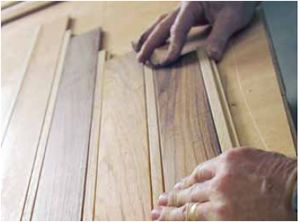
300
Island Packet Yachts has been building cruising boats for over 32 years. It builds five different hull designs—about 80 boats per year—to American Boat and Yacht Council and European Category A (offshore) standards.
Hull: The Island Packet Estero is solid, hand-laminated with heavy-knitted fiberglass. The leading edge of the keel, which has six layers of fiberglass, is more than an inch thick. Ballast (7,500 pounds of lead and iron) is laid in cavities in the keel and another thick layer of fiberglass is applied on top, in effect creating a double hull along the keel. The hull is reinforced with a structural grid. This is joined to a molded liner, and then bulkheads are taped into place. Vinylester gelcoat is used in the skincoat throughout the hull, polyester resin completes the laminate. Both are proprietary blends that have held up well. A 10-year warranty covers osmotic blistering.
Deck: The deck is cored with moisture-resistant Polycore, a proprietary mix of micro-balloons and resin that is applied by spray. Deck hardware is bolted into beefy aluminum plates. The mold incorporates several reinforced and sealed mounting bases for hardware.
Hull-to-deck joint: The hull-to-deck joint is an overlapping type (commonly referred to as a “shoe-box”), combining an adhesive bond between the deck and an inward hull flange with closely spaced bolts through the deck and hull around the yacht’s entire perimeter. The deck is through-bolted (with Nylock nuts and washers) on six-inch centers and bonded with 3M 5200.
Rudder: The rudder post is a 2-inch solid stainless-steel shaft. The rudder is foam-filled molded fiberglass, backed by a steel grid welded to the shaft. A full-length skeg protects the rudder. A stainless steel “shoe” extends aft from the keel to the skeg, protecting the rudder and keeping the prop from fouling on crab pots. The shoe is fitted with a Delrin bearing to accept the rudder post. Steering is a Cobra rack-and-pinion system from Lewmar.
Rig: The keel-stepped mast is a Sparcraft aluminum mast with in-mast furling. Both the mast and the Hoyt boom are anodized and powder coated. Rigging is continuous, linked to twin stainless-steel chainplates linked by a stainless-steel bar. The whole chainplate assembly is then molded into the hull.







































